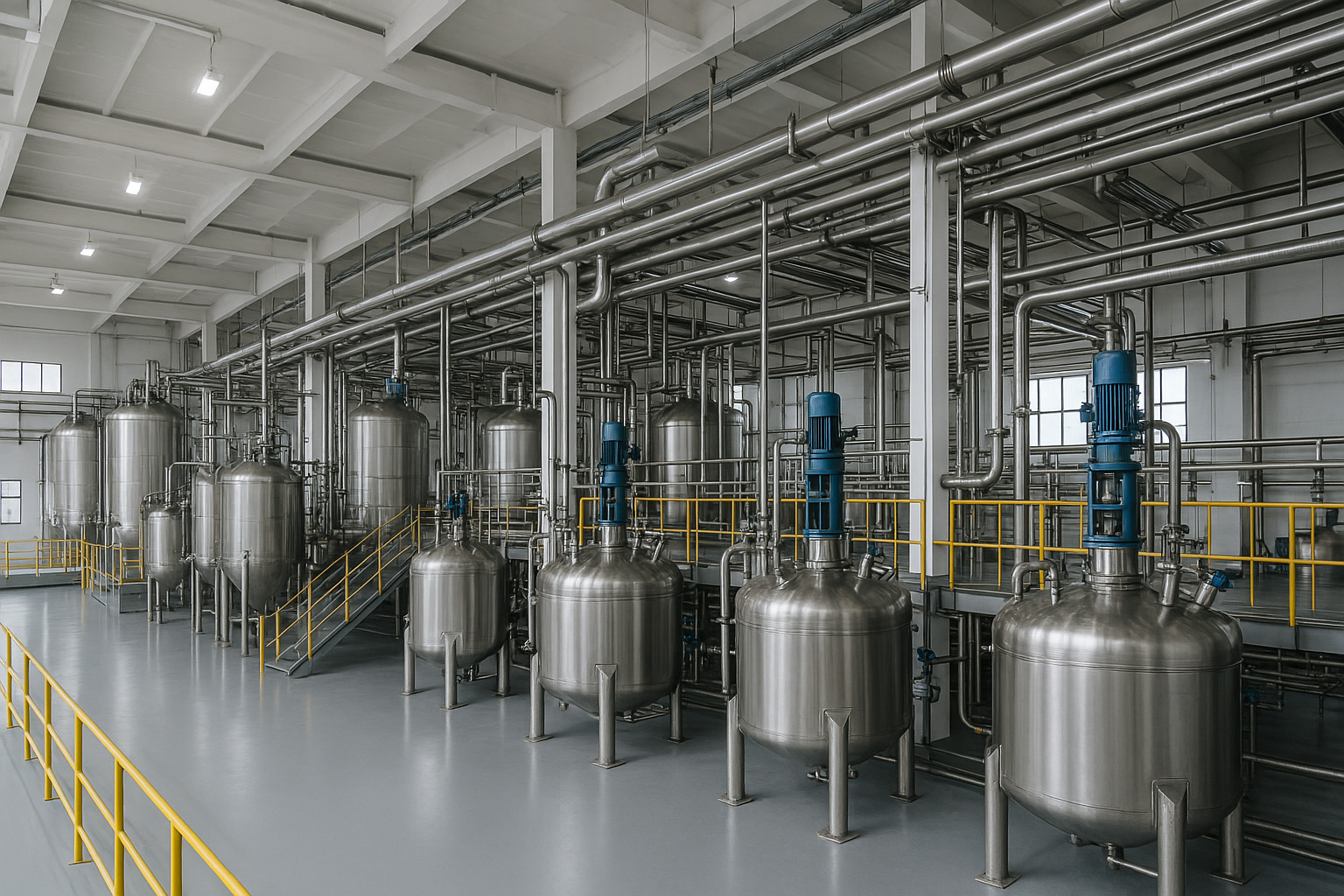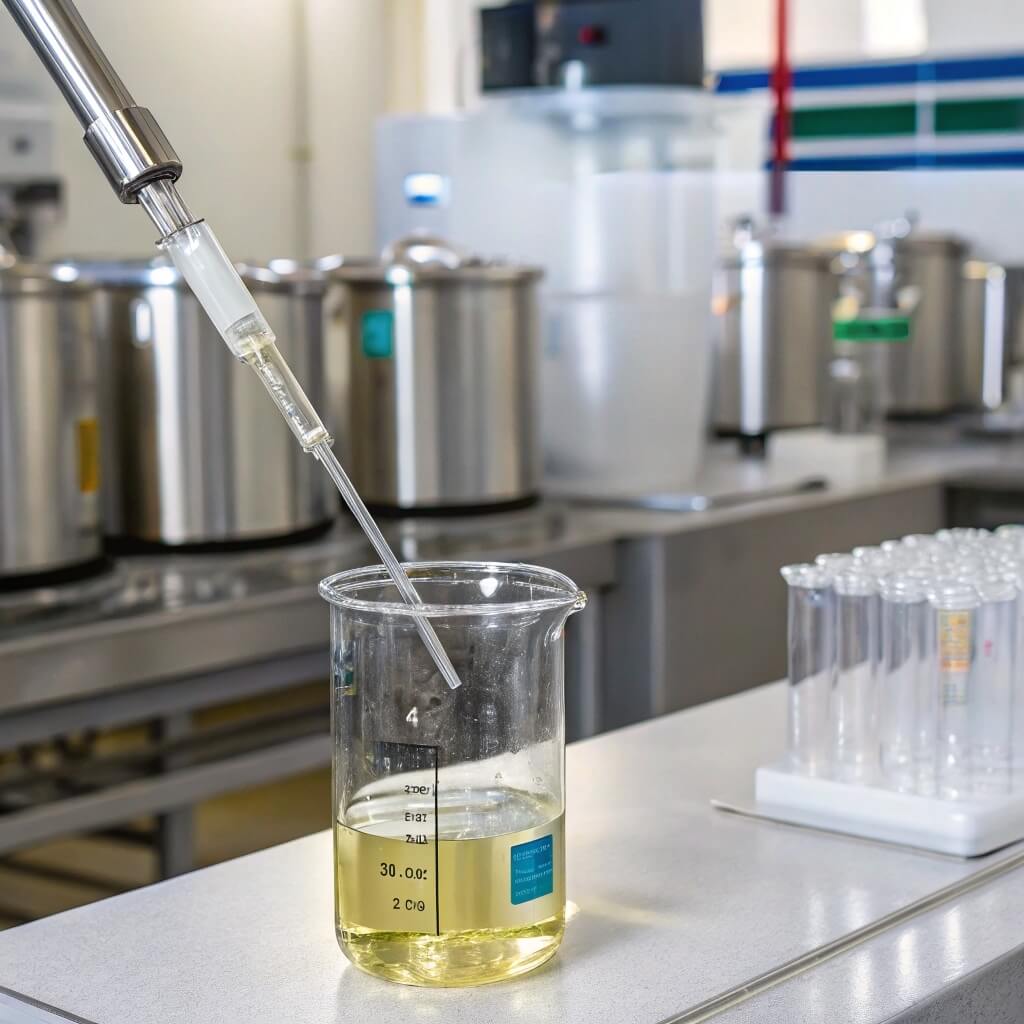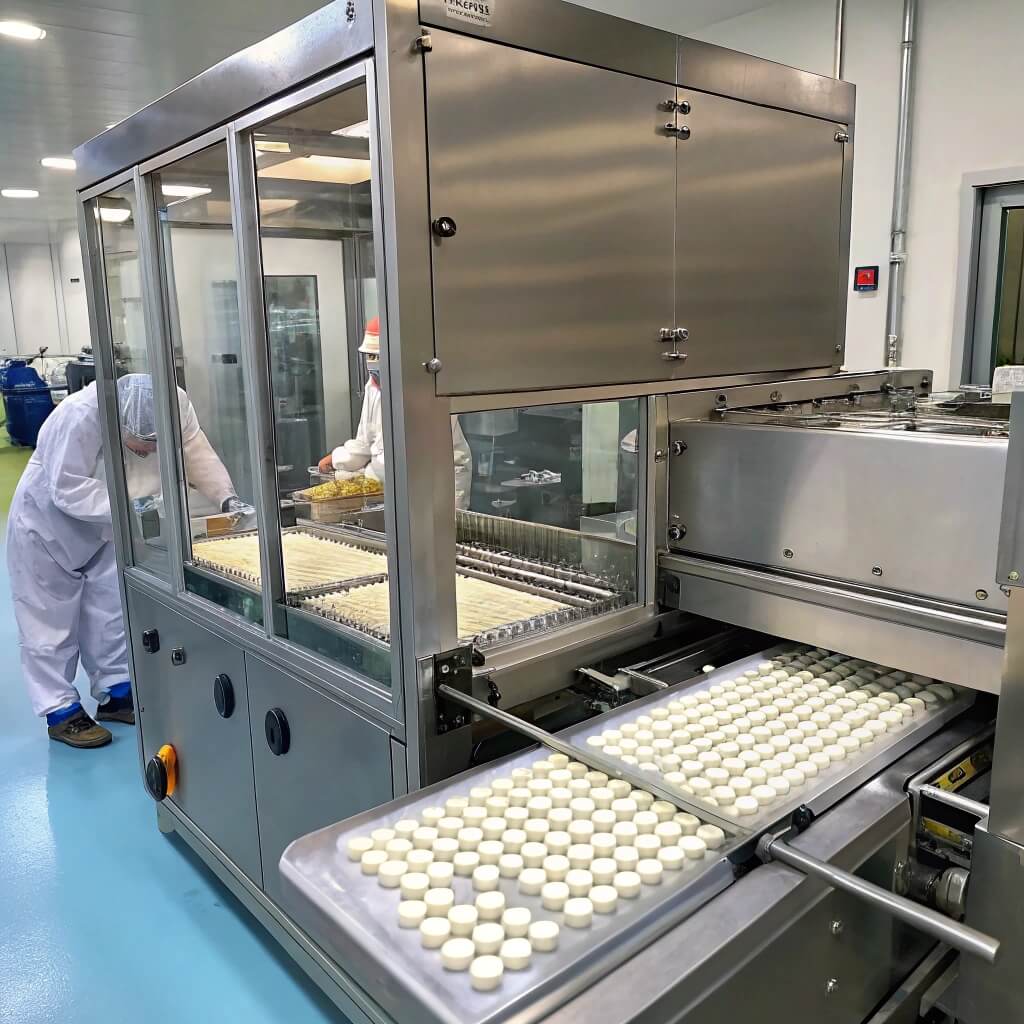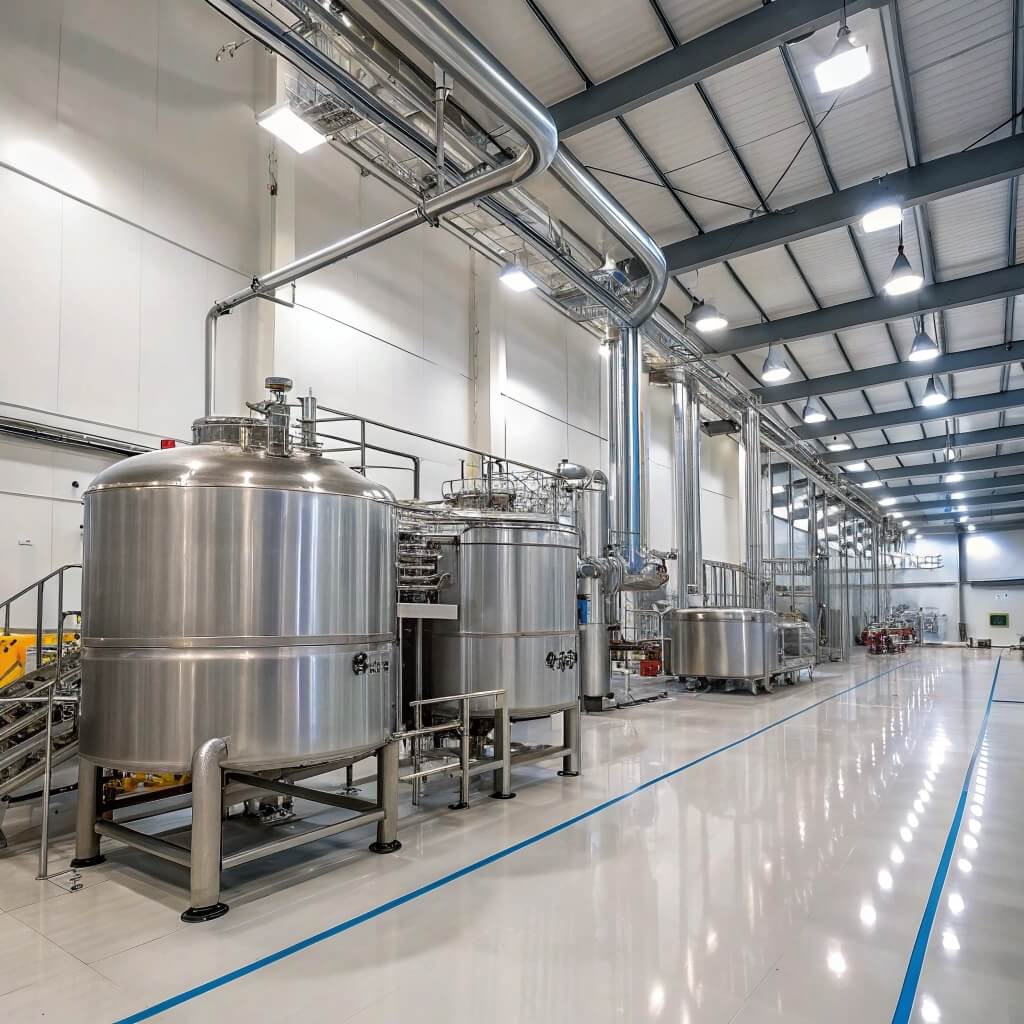Inconsistent HPMC quality can ruin your product performance and upset customers. Why risk your reputation?
HPMC manufacturing involves a precise chemical modification process where cellulose from wood pulp or cotton is treated with various reagents under controlled conditions to produce a versatile polymer with specific properties for different applications.

A modern HPMC production facility with specialized reactors and processing equipment where raw cellulose is transformed into high-quality hydroxypropyl methylcellulose.
Want to know what happens behind the scenes at an HPMC factory? Let's pull back the curtain on our manufacturing process so you can better understand the product you're buying.
What are the raw materials and key ingredients used by HPMC manufacturers?
Poor raw materials mean poor final products. No factory can create quality without the right ingredients.
Our HPMC production starts with high-purity cellulose, which forms the backbone of the final product. We source this cellulose mainly from sustainable wood pulp or cotton linters that have been carefully selected for their fiber length and purity.
The basic raw materials used in HPMC production include:
- Cellulose (from wood pulp or cotton)
- Sodium hydroxide (caustic soda)
- Methyl chloride
- Propylene oxide
- Hydrogen peroxide (for purification)
- Various acids for neutralization
- Specialized catalysts
At our factory, we've set strict standards for each raw material. For example, the cellulose we use must have an alpha-cellulose content above 95%, with minimal contamination from lignin or hemicellulose. These impurities would affect the final HPMC properties such as solution clarity and gel formation.
We've noticed many quality problems in final HPMC batches can be traced back to raw material inconsistencies. That's why our purchasing team checks each delivery against detailed specifications. Each supplier must provide certificates of analysis, which our lab team verifies through independent testing.
The quality of water used in production also plays a crucial role. Our process requires deionized water with conductivity below 5 µS/cm to avoid mineral interference with the chemical reactions. This might seem like a small detail, but water quality affects everything from reaction efficiency to final product purity.
How does the chemical modification of cellulose take place in HPMC factories?
One wrong step in the chemical process can ruin an entire batch. The financial loss can be huge.
The transformation of cellulose into HPMC happens through a series of chemical reactions that modify the natural cellulose structure. First, we treat cellulose with sodium hydroxide to create alkali cellulose, which makes the cellulose more reactive.
Our reaction process takes place in specialized pressure vessels where temperature and pressure are precisely controlled. During this stage, the hydroxyl groups on the cellulose molecules are substituted with methoxy and hydroxypropyl groups.
The reaction process involves several key stages:
- Alkalization: Cellulose fibers react with sodium hydroxide
- Etherification: The alkali cellulose reacts with methyl chloride and propylene oxide
- Neutralization: The excess alkali is neutralized with acids
- Purification: Removal of by-products and unreacted materials
- Drying: Reducing moisture content to stable levels
The timing of each reagent addition is critical. Too early or late can affect substitution patterns. We've refined this timing through years of testing and production experience. For instance, adding propylene oxide too early can lead to uneven substitution, while delayed addition might result in excessive methoxyl content.
Temperature control is another critical factor. Our reactors maintain temperatures between 50-80°C depending on the reaction phase. Higher temperatures speed up reactions but can lead to degradation, while lower temperatures give better control at the cost of longer processing times. This balance between reaction rate and product quality represents one of the most challenging aspects of HPMC production.
What are the major phases in the HPMC production line?
Skip one production phase and your HPMC will fail quality tests. The entire process must be followed carefully.
The production of HPMC follows a multi-stage process flow that takes raw cellulose from its natural state to the final powder product. Each phase builds on the previous one, with quality checks throughout.
The major phases in our HPMC production include:
- Raw material preparation (cellulose pulp grinding and conditioning)
- Alkalization (treatment with sodium hydroxide)
- Chemical reaction (addition of methyl chloride and propylene oxide)
- Neutralization and washing
- Purification and filtration
- Drying and milling
- Classification and blending
- Quality testing and packaging
Each of these stages requires specialized equipment and precise control. For example, our alkalization phase uses jacketed reactors with powerful agitators to ensure even sodium hydroxide distribution throughout the cellulose slurry. Proper alkalization creates the foundation for all subsequent reactions by activating the cellulose.
The washing and purification stages remove by-products and unreacted chemicals. This step is vital for food and pharmaceutical grades of HPMC, where purity standards are extremely strict. Our multi-stage washing system reduces salt content to below 0.5%, meeting global standards for high-purity cellulose ethers.
The drying process determines the final moisture content, which typically must be below 5% to prevent microbial growth and maintain product stability. We use specially designed fluid bed dryers that provide gentle, uniform drying without degrading the polymer chains, which would reduce viscosity and performance.
Between each major phase, we perform in-process quality checks to ensure each batch meets specifications before proceeding to the next stage. This prevents investing time and resources in processing material that already shows quality deviations.
How do HPMC manufacturers ensure quality and compliance?
Without strict quality control, customers receive inconsistent HPMC batches. This can damage your reputation and cost you business.
Quality control permeates every aspect of our HPMC manufacturing process, from raw material inspection to final product certification. We've implemented a comprehensive quality management system that meets international standards for pharmaceutical excipients as specified by USP and EP guidelines.
Our quality assurance program includes:
- Raw material testing before production
- In-process testing during each manufacturing phase
- Finished product testing for all quality parameters
- Stability studies to ensure shelf-life compliance
- Third-party verification through independent laboratories
Key quality parameters we test for each batch include viscosity, substitution degree, gel temperature, particle size distribution, moisture content, and purity. For viscosity testing, we use precise rotational viscometers with temperature control at 20°C, ensuring our measurements align with international standards.
Substitution degree testing determines the methoxyl and hydroxypropyl content, which directly affects HPMC functionality in applications. We use gas chromatography following ASTM E1252 standards for accurate determination of the chemical composition of our HPMC.
For pharmaceutical and food-grade HPMC, we conduct additional tests for heavy metals, residual solvents, and microbial contamination. Our testing follows pharmacopeia methods with validated protocols. Each batch receives a Certificate of Analysis documenting all tested parameters.
We maintain detailed records of production conditions for each batch, creating a complete audit trail from raw materials to finished product. This traceability system allows us to quickly investigate any reported quality issues and identify root causes. Our quality management team can track every production parameter for any specific batch code, providing customers with detailed information when needed.
What technologies and equipment are used in industrial HPMC production?
Outdated equipment leads to product inconsistency. Modern technology is key to reliable HPMC manufacturing.
The production of high-quality HPMC requires specialized equipment designed for precise chemical processing, effective mixing, and consistent product formation. In our factory, we've invested in advanced technology to ensure reliability and efficiency.
| Equipment Type | Funzione | Key Specifications |
|---|---|---|
| Pressurized Reactors | Chemical modification | Stainless steel, 5-20m³ capacity, 10 bar pressure rating |
| Filtration Systems | Purificazione | Multi-stage filtration, 1-50 micron range |
| Spray Dryers | Powder formation | Inlet temp 200-280°C, outlet 80-100°C |
| Fluid Bed Dryers | Final drying | Controlled airflow, 60-90°C operating range |
| Jet Mills | Particle size control | 10-200 mesh capability |
| Blending Systems | Homogenization | V-blenders with 1-5 ton capacity |
Our reaction vessels feature computerized control systems that monitor and adjust temperature, pressure, pH, and agitation speed in real-time. These parameters must stay within tight ranges to ensure consistent substitution patterns in the HPMC polymer chain.
Automation plays a crucial role in our manufacturing process. We've implemented PLC-controlled systems that manage sequential operations, material transfers, and process timing. This reduces human error and improves batch-to-batch consistency. For instance, our automated alkalization system precisely controls the sodium hydroxide concentration, reaction time, and temperature profile, which directly affects the reactivity of cellulose.
Material handling technologies also contribute to product quality. We use pneumatic transfer systems for powders to minimize contamination risks and improve worker safety by reducing dust exposure. For liquid reagents, we employ precision metering pumps and flow controllers to ensure accurate dosing.
For quality testing, we rely on advanced analytical instruments such as FTIR spectroscopy for structural analysis, laser diffraction for particle size measurement, and chromatography systems for substitution degree testing. These instruments provide detailed data that helps us fine-tune production parameters for optimal results.
How is HPMC customized for various industrial applications?
Generic HPMC won't meet your specific needs. Each application requires customized properties for optimal performance.
HPMC customization represents one of the most significant advantages we offer as manufacturers. By adjusting several key parameters during production, we can create products tailored to specific industrial applications and customer requirements.
The main customizable properties include:
- Viscosity range (from 5 to 200,000 mPa·s)
- Methoxyl content (affects water solubility)
- Hydroxypropyl content (influences thermal gelation)
- Particle size distribution (impacts dissolution rate)
- Surface treatment (for improved dispersibility)
For construction applications like tile adhesives and renders, we adjust the viscosity and thermal gelation temperature to provide optimal water retention and workability. Higher viscosità grades (15,000-30,000 mPa·s) improve adhesion strength and reduce sagging on vertical surfaces. For these products, we ensure compliance with construction industry standards for consistency and performance.
In pharmaceutical applications, the substitution pattern is critical for controlled drug release profiles. We produce HPMC with precisely controlled methoxyl and hydroxypropyl ratios that determine swelling behavior, gel strength, and dissolution characteristics. For tablet coating, we offer low-viscosity grades (3-15 mPa·s) with tight particle size distribution for smooth film formation.
Food applications require HPMC with specific gel temperatures and texturizing properties. We customize these grades to form gels at precisely defined temperatures, which is essential for applications like plant-based meat alternatives where protein-like textures are desired at cooking temperatures.
Our customization process starts with understanding the customer's application requirements. We then adjust our production parameters, including reaction conditions, substitution reagent ratios, and processing steps. After production, we conduct application-specific tests to verify that the custom HPMC performs as expected in real-world conditions.
The ability to fine-tune HPMC properties makes it an extraordinarily versatile polymer across diverse industries. Our technical team works closely with customers to develop specifications that solve specific formulation challenges or enhance product performance beyond what standard grades can achieve.
Domande frequenti
Qual è il processo di produzione dell'HPMC?
HPMC manufacturing involves treating purified cellulose with sodium hydroxide to create alkali cellulose, followed by reaction with methyl chloride and propylene oxide to introduce methoxyl and hydroxypropyl groups. The resulting polymer undergoes washing, purification, drying, and milling to create the final powder product with specific physical and chemical properties.
What are the raw materials for HPMC?
The primary raw materials for HPMC production include high-purity cellulose (from wood pulp or cotton), sodium hydroxide (caustic soda), methyl chloride, propylene oxide, hydrogen peroxide, and various acids for neutralization. The quality of these raw materials, especially the cellulose source, directly affects the properties and performance of the final HPMC product.
How to develop HPMC?
Developing new HPMC grades requires adjusting reaction parameters such as temperature, reagent ratios, reaction time, and agitation. Manufacturers modify the degree of substitution, viscosity, and particle characteristics by controlling these variables. Development also involves extensive testing in target applications and often requires specialized equipment for small-batch production before scaling up.
What is HPMC made from?
HPMC is made from natural cellulose, typically derived from sustainable sources like wood pulp or cotton linters. The cellulose undergoes chemical modification through etherification reactions, where hydrogen atoms in the hydroxyl groups are partially replaced with methyl and hydroxypropyl groups. This transformation converts water-insoluble cellulose into a versatile, water-soluble polymer with diverse functional properties.
Conclusione
The production of HPMC represents a sophisticated balance of chemistry, engineering, and quality control. From carefully selecting raw materials to precision chemical reactions and meticulous testing, each step contributes to creating a product that meets exact specifications for various industries.
At Morton, we've refined our manufacturing process over 10 years, incorporating advanced technologies and strict quality protocols. Our approach ensures consistent HPMC products that perform reliably in your applications, whether for construction materials, pharmaceuticals, or food products.
Understanding the complexities behind HPMC production helps you appreciate why quality can vary between suppliers and why proper manufacturing matters for your end products. Contact us for a factory tour to see our production facilities firsthand and discuss how our customized HPMC solutions can improve your product performance.




